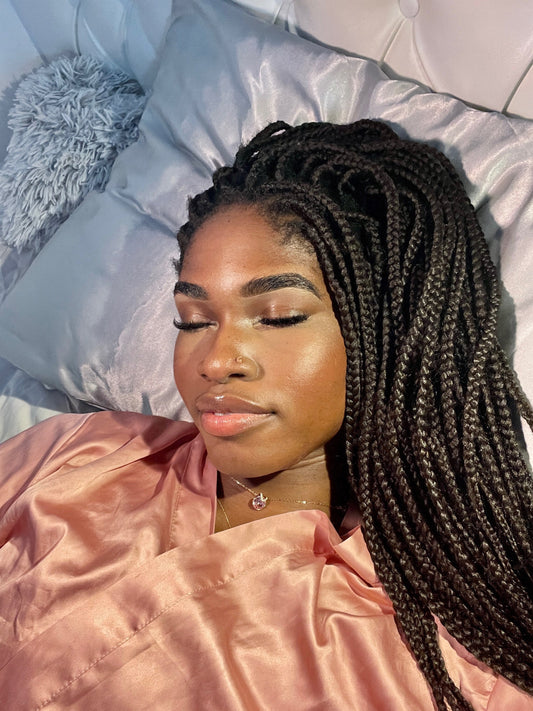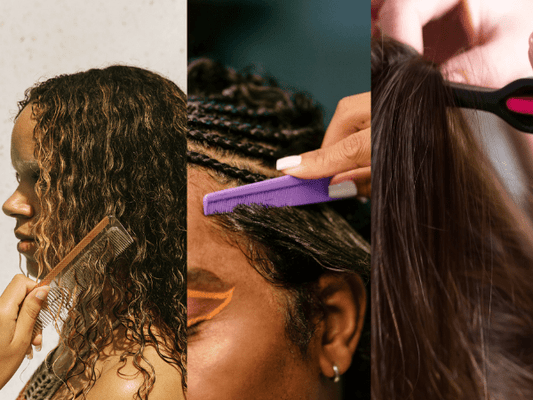Among the myriad of styling debates, one that frequently emerges in the curly community is whether to style hair when it's wet or damp. Both methods have their advocates and detractors, and the truth is, the best approach depends on various factors, including hair type, desired results, and personal preference. This article delves into the pros and cons of wet and damp styling for curly hair, offering insights to help you decide which method might be better for you.
Understanding Wet Styling
Wet styling involves applying styling products to your hair immediately after washing, while it's still dripping wet. This technique is often favored for its ability to lock in moisture, reduce frizz, and enhance curl definition.
Pros of Wet Styling:
- Maximized Moisture Retention: Applying products to wet hair helps seal in the water, providing hydration to the curls.
- Enhanced Curl Definition: Wet hair allows styling products to distribute more evenly, defining curls from root to tip. Want more tips on defining curls? Check out The Art of Finger Coiling for Defined Curls.
- Reduced Frizz: The water acts as a barrier, preventing product from being absorbed too quickly and reducing the potential for frizz. For more on fighting frizz, read The Benefits of Using Hair Oil on Curly Hair.
Cons of Wet Styling:
- Longer Drying Time: Styling on wet hair can significantly increase drying time, whether air drying or using a diffuser. Curious about drying techniques? Visit Mastering the Art of Drying Curly Hair.
- Potential for Product Dilution: Products may be diluted by the excess water, potentially reducing their effectiveness.
- Risk of Over-saturation: Applying too much product to wet hair can lead to weighed-down curls or product buildup. For guidance, see How Much Product to Use on Curly Hair: A Guide.
Understanding Damp Styling
Damp styling, on the other hand, involves styling the hair after it has been towel-dried or air-dried slightly, so it's no longer dripping but still retains some moisture.
Pros of Damp Styling:
- Shorter Drying Time: Less water in the hair means it will dry faster, making damp styling more time-efficient.
- Greater Volume: Styling on damp hair can result in more volume at the roots, as the hair isn't as heavily weighed down by water.
- More Control Over Product Application: It's easier to gauge how much product you're using on damp hair, reducing the risk of over-application.
Cons of Damp Styling:
- Increased Frizz Potential: Without the water 'barrier', hair may absorb products unevenly, potentially leading to frizz.
- Less Definition: Curls may not clump together as well without the weight of water, leading to less defined curls.
- Moisture Loss: Damp styling may not lock in as much moisture as wet styling, potentially leaving curls drier.
Which Is Better?
The choice between wet and damp styling often boils down to personal preference and specific hair needs. Here are some factors to consider:
- Hair Porosity: High porosity hair, which absorbs and loses moisture quickly, may benefit more from wet styling to maximize moisture retention. Low porosity hair, which struggles to absorb moisture and products, might fare better with damp styling to prevent product buildup. Learn more about Mastering Hair Porosity: The Key to Healthy Curls.
- Curl Type: Tighter curl patterns (like 3C, 4A, 4B, 4C) may find wet styling enhances definition and reduces frizz. Looser waves and curls (2A, 2B, 2C, 3A, 3B) might achieve more volume and bounce with damp styling.
- Desired Results: If your primary goal is definition and frizz control, wet styling might be your best bet. If you're aiming for volume or quicker styling times, consider starting with damp hair.
- Lifestyle and Time: Wet styling typically requires more drying time. If you're short on time or prefer not to use a diffuser, damp styling might be more practical.
Tips for Successful Wet and Damp Styling
Regardless of which method you choose, here are some tips to ensure the best results:
- Use a Microfiber Towel or Cotton T-shirt: These materials are gentler on curls than traditional towels, reducing frizz whether you're preparing for wet or damp styling.
- Apply Products in Sections: Whether your hair is wet or damp, applying products in smaller sections ensures even distribution and better coverage.
- Scrunch to Enhance Curls: Scrunching hair gently with your hands helps encourage curl formation and can remove excess water for those opting for damp styling.
- Experiment: Everyone's hair is different. Don't be afraid to experiment with both methods to see which yields the best results for your curls.
Conclusion
In the debate between wet and damp styling for curly hair, there's no one-size-fits-all answer. Both methods have their advantages and challenges, and the right choice varies depending on individual hair characteristics, goals, and preferences. By understanding the nuances of each approach and considering your hair's specific needs, you can make an informed decision that leads to beautifully styled, healthy curls. Remember, the curly hair journey is highly personal and experimental, so embrace the process of discovering what works best for your unique curls.











